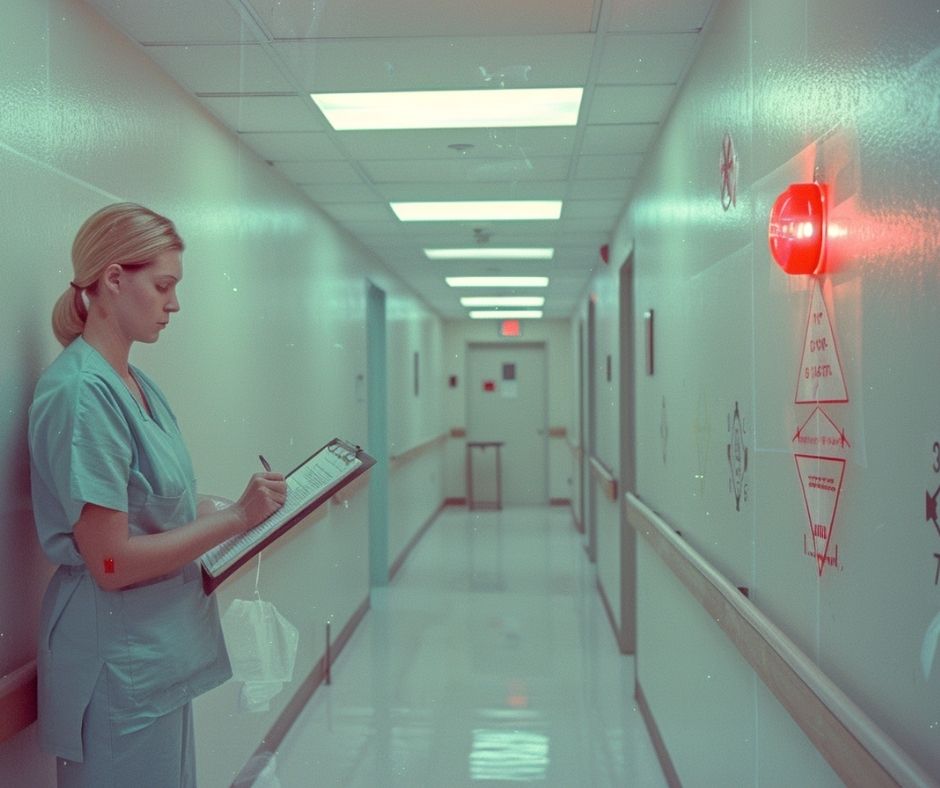What Happens When Safety Becomes Routine?
Nobody thinks a routine could hide a danger, and that’s a problem. In places like nursing homes, schools, and hospitals, you assume safety is handled. It’s almost in the background and nobody really thinks about it. The staff do their rounds, all the alarms are set, everybody follows protocols. At some point, the entire system starts to feel familiar and when that happens, people stop paying attention.
This is not laziness, it’s just human nature. Our brains tune out what they see every day, and, after weeks, months, even years of nothing going wrong, it becomes easier to miss that one moment when something does.
That’s exactly how warning signs slip through the cracks. Residents don’t get checked, broken equipment is left to sit and, sometimes, the consequences can be tragic.
The point of this article is not to blame specific individuals but to realize how complacency sneaks in and why the routines meant to protect people can end up putting them at risk.
The Psychology Behind Complacency in Familiar Environments
Psychological complacency is what happens when people get too comfortable in their surroundings and stop expecting anything to go wrong. This doesn’t happen overnight; it builds up little by little, especially in places where things run smoothly. If nothing bad has happened for weeks or months, the brain starts to assume nothing ever will. This is very problematic because it creates a false sense of security.
The Mindset goes from “I need to be careful” to “everything’s under control”, even when the risks are still all there.
This is where habituation kicks in. It’s a natural process – when the brain sees or hears the same thing over and over, it eventually starts ignoring it, and it’s not always bad. In fact, it’s great for tuning out background noise, but it also means that things like safety checks and alarms can slip under the radar. You simply stop noticing them and even clear warning signs can seem like just another part of the routine.
Then there’s optimism bias and normalcy bias, which are two ways our minds trick us into thinking we’re safer than we really are. Optimism bias tells us that serious accidents are rare and happen to other people.
Normalcy bias convinces us that, if everything’s been going fine so far, it will keep being like that. These beliefs are often reinforced by workplace culture. If supervisors and coworkers act like everything is normal, it gets harder to speak up or question a pattern that might actually be dangerous.
Real-World Examples of Places Where Routine Undermines Vigilance
It’s easy to talk about complacency in theory, but it gets much more concerning when you see its consequences in real life. It’s not that people stop caring, it’s that their routines dull their senses over time.
Let’s go over some examples.
1. Nursing Homes and Long-Term Care Facilities
Giving meds, serving meals, and assisting with hygiene become mechanical for the staff, so they might follow a routine but miss the signs of neglect. Skipped doses, dehydration, or a resident starting to withdraw can all go unnoticed. Sometimes, it’s pure carelessness, but other times, it’s just familiarity.
This kind of systematic desensitization can have dreadful outcomes. There are so many documented cases of wrongful death in Chicago senior care centers, Los Angeles, New York… All over the country, sadly.
2. Hospitals and Clinical Settings
Hospitals run on schedules and alerts, but as time goes on, staff stop noticing the constant noise. Alarm fatigue is a real thing, as are changes in shifts, long hours, and rushed handoffs.
When everyone assumes things are working well, small issues get overlooked because nobody notices the early symptoms and the structure that was supposed to prevent mistakes ends up hiding them.
3. Schools and Childcare Facilities
Routines are what create order in schools, but it’s also create blind spots. If a child gets upset or starts to act withdrawn, the staff might brush it off as a bad day. They see that behavior every day and stop questioning it.
And even with so many rules in place, familiarity can still make it easy to miss things that point to abuse, neglect, or emotional distress.
4. Air Traffic Control and Other High-Safety Zones
Air traffic controllers have to follow strict procedures, but repetition wears down focus. Most flights are routine, so the brain stops expecting anything unusual to happen. And this is where mistakes come into the picture because, even with full protocols, assuming that “everything is okay” can cause serious lapses.
And in an environment like this, one single lapse can mean a disaster.
Conclusion
Unfortunately, safety isn’t as easy as pushing a button or completing a checklist. And the more familiar the place feels, the easier it is to stop seeing what’s actually happening. This is where things start to go very wrong and, sometimes, end up tragically.
So, shake things up here and there, question the process, and pay attention even when everything is going like clockwork.
